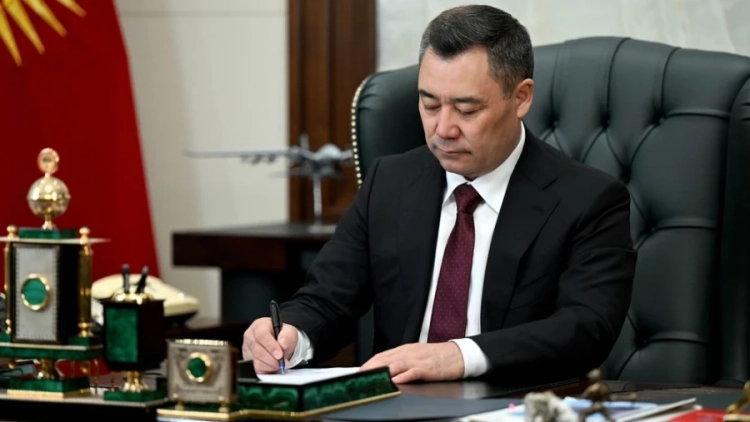JUSTIFICATION for the draft Law of the Kyrgyz Republic "On Glaciers of the Kyrgyz Republic"
The Kyrgyz Republic, occupying almost the entire western half of the powerful intra-continental mountain system of the Tien Shan and partially the Pamir-Alai ranges, has well-developed glaciation. Glaciers are one of the natural riches of the republic, the value of which is hard to overestimate, primarily due to their ability to maintain a sufficiently high water flow in most rivers even in the driest years, when the annual precipitation is below the long-term average.
The role of glaciers is exceptionally multifaceted: they influence the climate by lowering air temperature and increasing precipitation; they are objects of sports and recreational use. However, glaciers acquire the greatest significance as sources of runoff formation.
Glaciers in Kyrgyzstan occupy 4.2% of the total territory. A total of 6,582 glaciers have been registered in the republic. Their total area is 8,047.8 km². In the mountain system of Kyrgyzstan, the main mass of ice is concentrated not at the peaks but at the bottom of deep intermountain depressions. There, precipitation accumulates not only falling on the surface of the glaciers but also brought from the slopes by avalanches and blown by snowstorms.
Mountain glaciers have a unique ability to move. The speed of their movement depends on size, feeding regime, steepness of the bed, and other factors. On average, glaciers move from several dozen to several hundred meters per year.
• Alai Range: The Alai mountain massif has 1,360 glaciers.
Their area is 957 km².
• Kyrgyz Range: It has 607 glaciers with an area of 530.4 km².
The largest glacier in this area is the "Golubina" glacier. Its length is 5.5 kilometers, and its area is 9.4 km².
• Northern slope of the Kakshaal-Too range: This range contains 600 glaciers. Their total area is 90.76 km².
• Basin of the Jangak River: Here, there are 400 glaciers, with a total area of about 400 km².
• Basin of the Sary-Jaz River: 24% of this basin is covered by ice. Here, there are 340 glaciers with a total area of 1,581 km², among which the largest glacier mass is "Enilchek," which is divided into southern and northern parts. The area of the "Southern Enilchek" glacier is 613 km², and the area of the "Northern Enilchek" glacier is 203 km², with an ice thickness of 20-40 meters. This territory also contains the glaciers "Kainy," "Mushketova," and "Semenova." Their average area is over 20 km².
• Talas Range: Here, there are 202 glaciers. Their total area is 121 km².
The largest glacier in this territory is "Around the World." Its length is 3.6 kilometers, and its total area is 6.8 km².
• Southern slope of the Kungey Ala-Too range: This slope contains 159 glaciers with a total area of 140.3 km².
The largest glaciers in Kyrgyzstan are:
• Southern Enilchek Glacier – 613 km²
• Northern Enilchek Glacier – 203 km²
• Kainy Glacier – 108 km²
• Korzhenevsky Glacier – 89.1 km²
• Mushketova Glacier – 75 km²
• Semenova Glacier – 75 km²
Glaciers supply clean water to numerous rivers that originate from the mountains. They contain vast reserves of fresh water, which are essential for the population in some regions of the planet. Water reserves can be considered renewable resources; however, these resources are limited. The total volume of water reserves in the glaciers of Kyrgyzstan is estimated to be between 44,509 km³ and 51,900 km³.
Unfortunately, the data provided today may not correspond to reality, as they are still from the Soviet period. The glacier registry is not updated, and consequently, effective monitoring of glaciers is not conducted.
The adoption of this Law will contribute to the creation of prerequisites for effective monitoring of glaciers, maintaining the Registry and its updating, studying the dynamics of changes in the state of glaciers and the glacial environment, and developing criteria and methods for calculating the damage caused to glaciers by anthropogenic or technogenic impacts. This, in turn, will allow for determining the degree of responsibility for such damage and developing preventive measures to avoid such damage.
Melting of Glaciers
The melting of ice occurs with varying intensity depending on meteorological conditions. On average, a layer of ice 2 meters thick can melt in one summer. Glaciers and seasonal snows are unique reservoirs of fresh water. From 30% to 35% of the feeding of mountain rivers in Kyrgyzstan is provided by glaciers. The fresh water reserve in glaciers is estimated at about 650 billion cubic meters. If all the glaciers of Kyrgyzstan were to melt, there would be 1.26 meters of water for every square meter of the country's territory. Global climate warming is leading to a decrease in glacier area each year. According to scientists' forecasts, in 20 years, the area of glaciers in Kyrgyzstan will decrease by 35%.
What dangers does glacier melting pose?
The melting of Tien Shan glaciers threatens water shortages in Central Asia, which may sharply reduce the amount of irrigation and drinking water, raising questions about food security and reducing the hydroelectric potential of the republics. Consequently, their political potential will also decrease.
There is great concern about the impact of anthropogenic and technogenic factors on glacier melting. This exacerbates the melting process and sometimes leads to irreversible ecological consequences, disrupting the unified ecosystem characteristic of the glacial environment.
According to existing forecasts, in the coming decades, they may completely melt. Then, less water will flow into mountain rivers. The upstream countries will find themselves as managers of scarce water resources. In addition to political risks, such a situation will lead to tragic socio-economic consequences and force a large number of residents of lowland areas engaged in agriculture to migrate.
Considering the importance of the problem, in May 2012, an Agreement was signed between UNESCO and the Government of the Republic of Kazakhstan to establish the Central Asian Regional Glaciological Center.
The current draft Law of the Kyrgyz Republic "On Glaciers of the Kyrgyz Republic" is submitted with the aim of creating a legislative framework for the protection of glaciers, integrating the Kyrgyz Republic into the international movement for glacier conservation, combating climate change, and rational management of water resources.
The objectives of the draft law are:
- to create the foundations for glacier protection;
- to establish a glacier monitoring service;
- to create prerequisites for training glaciological and meteorological specialists in the republic;
- to introduce measures of responsibility for damage to glaciers.
The adoption of the draft is expected to have a positive social, economic, and ecological effect. The law will not cause gender, human rights, or corruption consequences. It complies with the laws of the Kyrgyz Republic. An analysis of regulatory impact is available. Due to the use of the existing personnel and scientific potential of the National Academy of Sciences and departments for the implementation of the Law, no additional budget expenditures will be required. Within four months, the project was posted on the website of the Jogorku Kenesh for public discussion, and no proposals or comments were received. A round table was held with the participation of representatives from the scientific community, glaciologists, hydrologists, and ecologists. No proposals or comments were received.
E.Imankozhoeva (SDPK)
A.Jeenbekov (SDPK)
K.Imanaliev (Ar-Namys)
Ch.Sultanbekova (Republic)
Glaciers















































